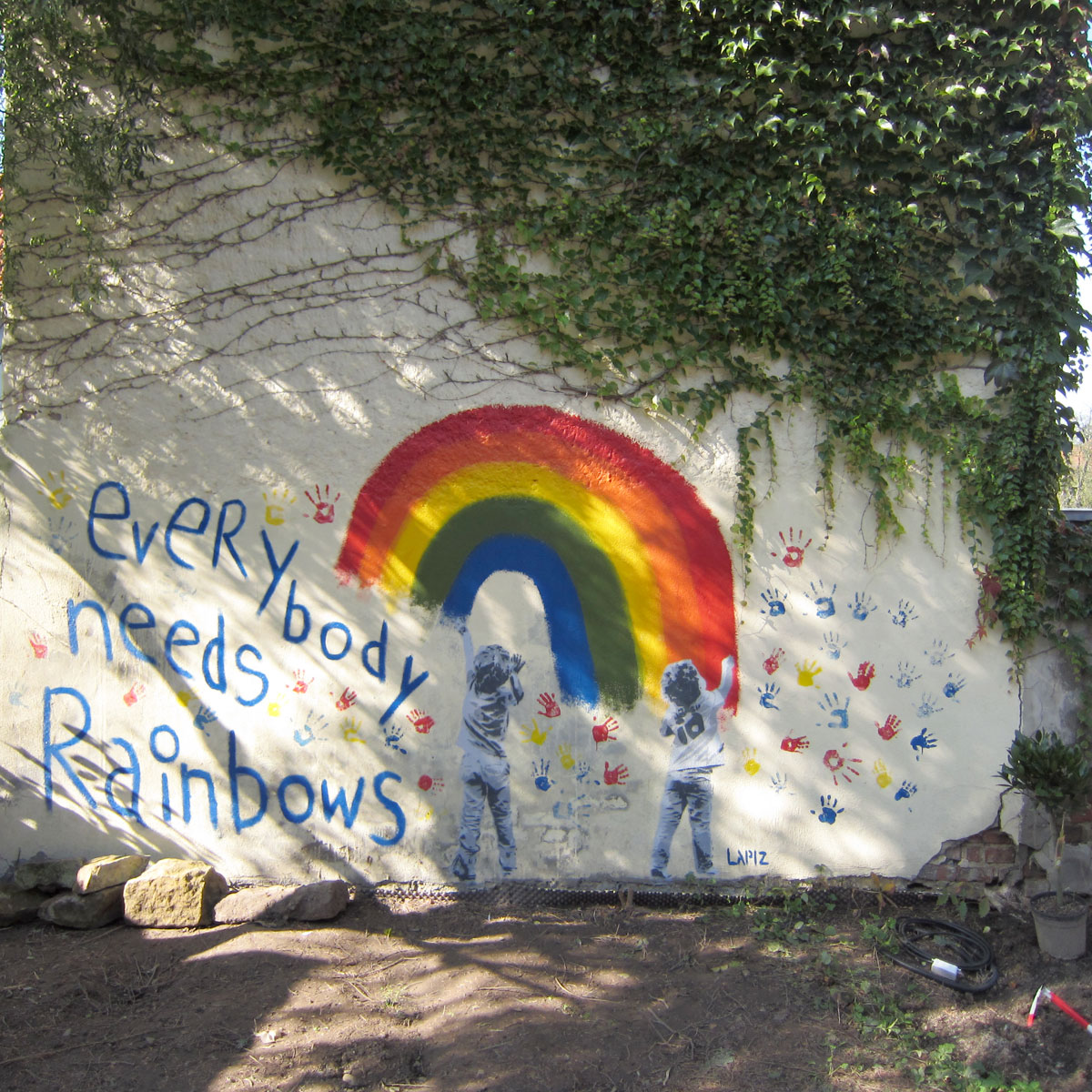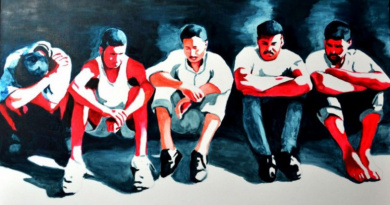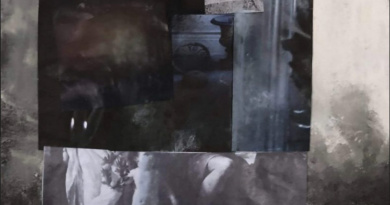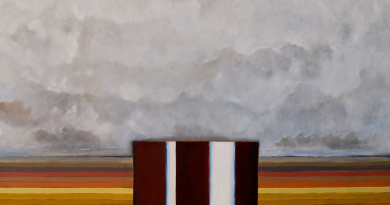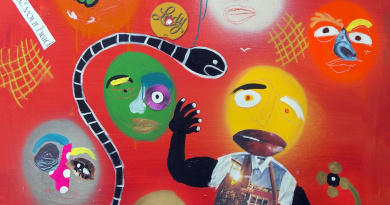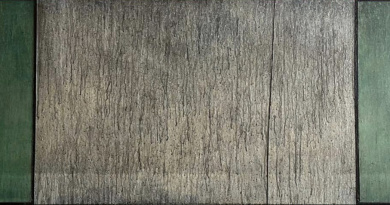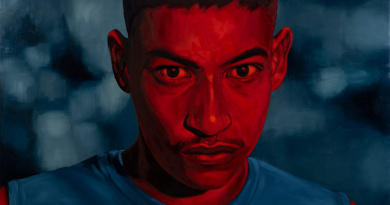Maybe it was easier for LAPIZ to understand the world because he’d seen so much of it. Born in Germany, the artist spent his childhood moving around the globe, accompanying his parents on their many residential experiments. He spent his early adulthood studying in South Africa and New Zealand before moving to Argentina, where he committed to art. Informed by these rich experiences, artwork by LAPIZ shocks unwitting viewers from the pseudo-soothing monotony of mundane life.

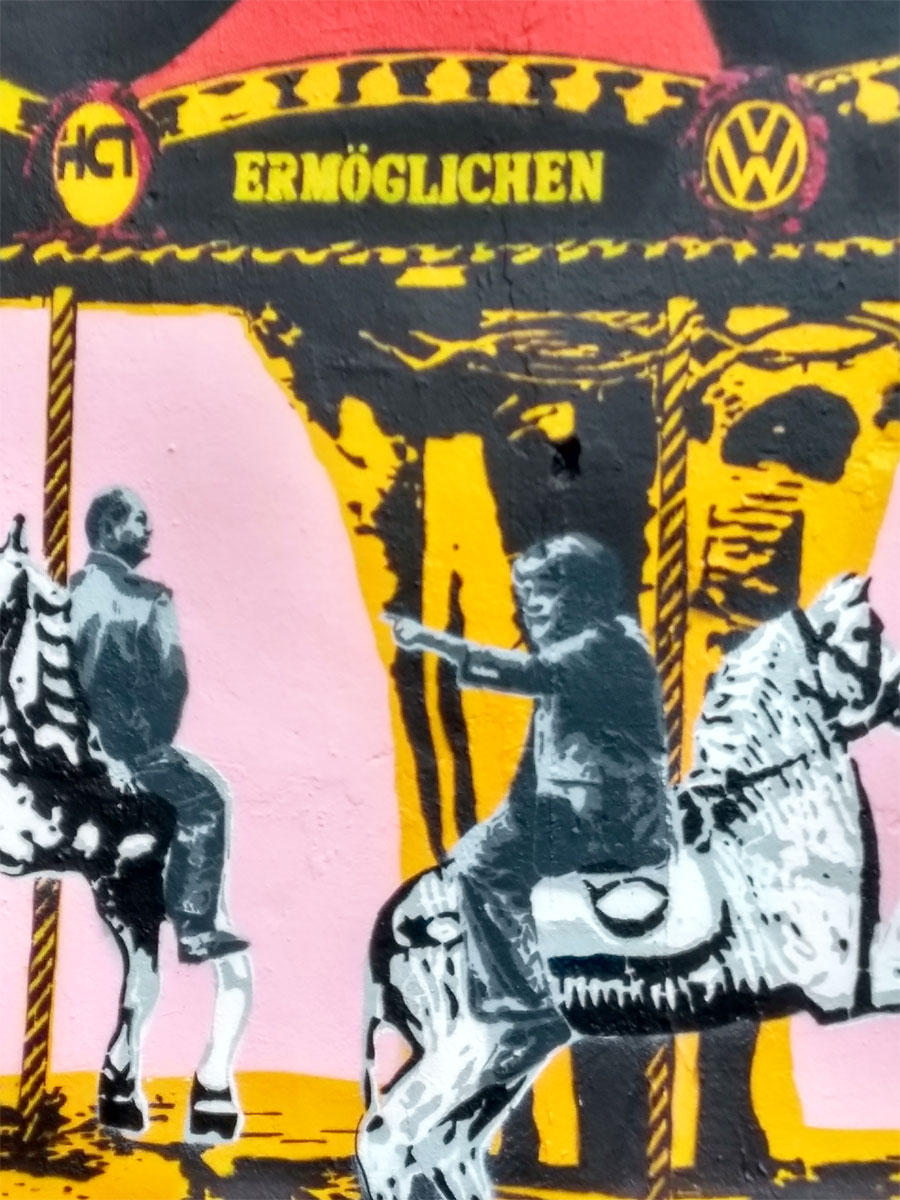
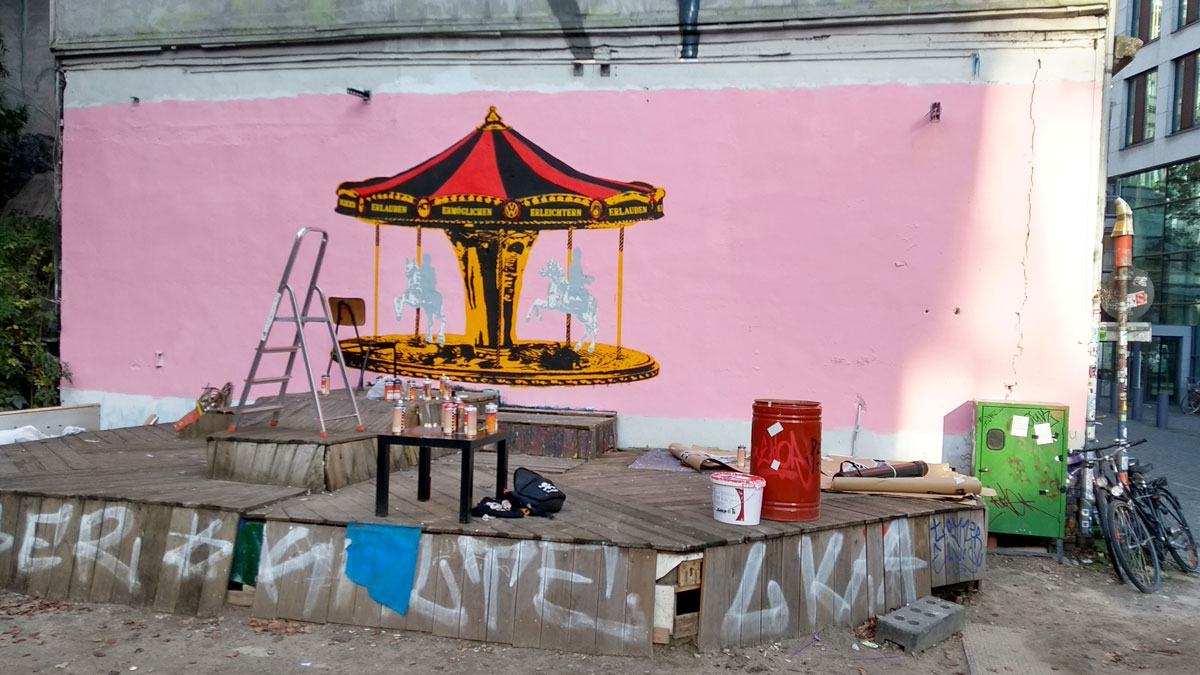
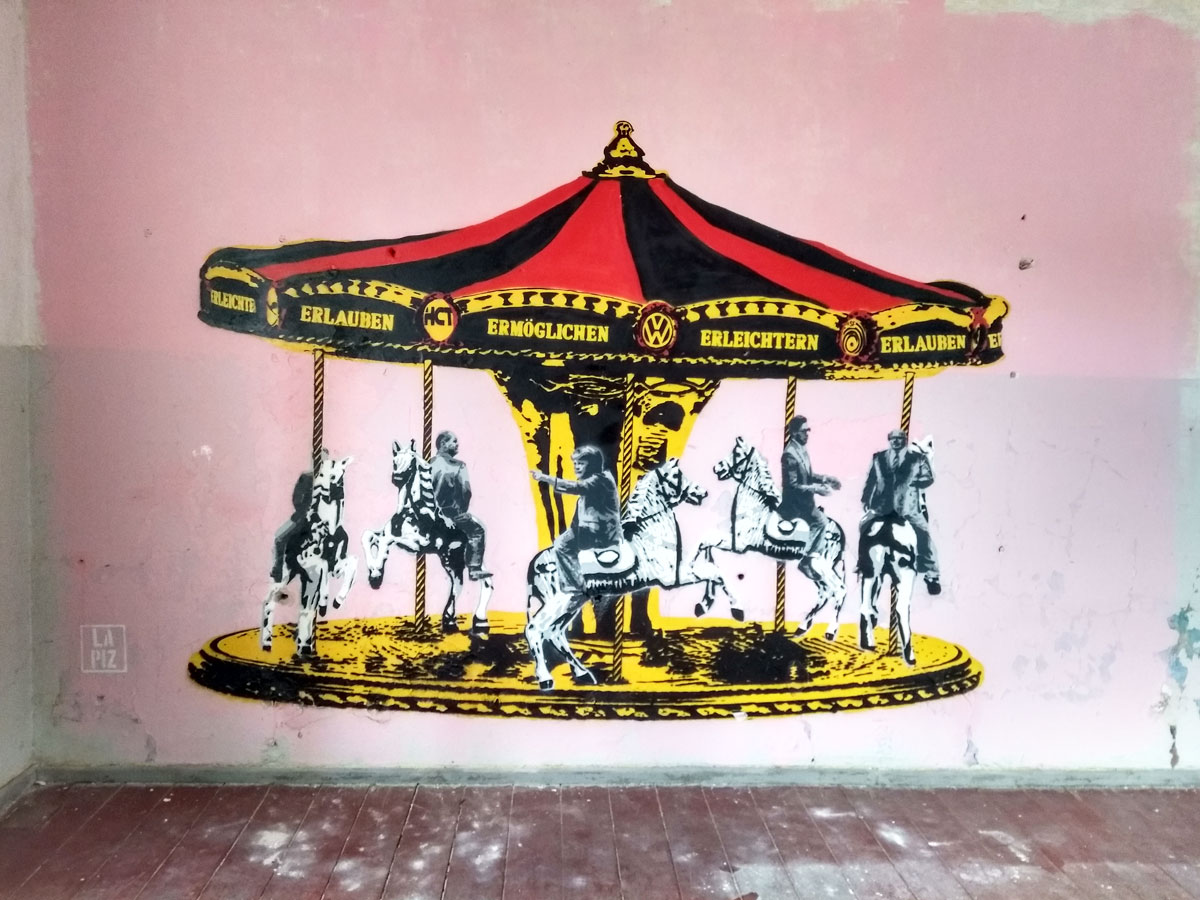
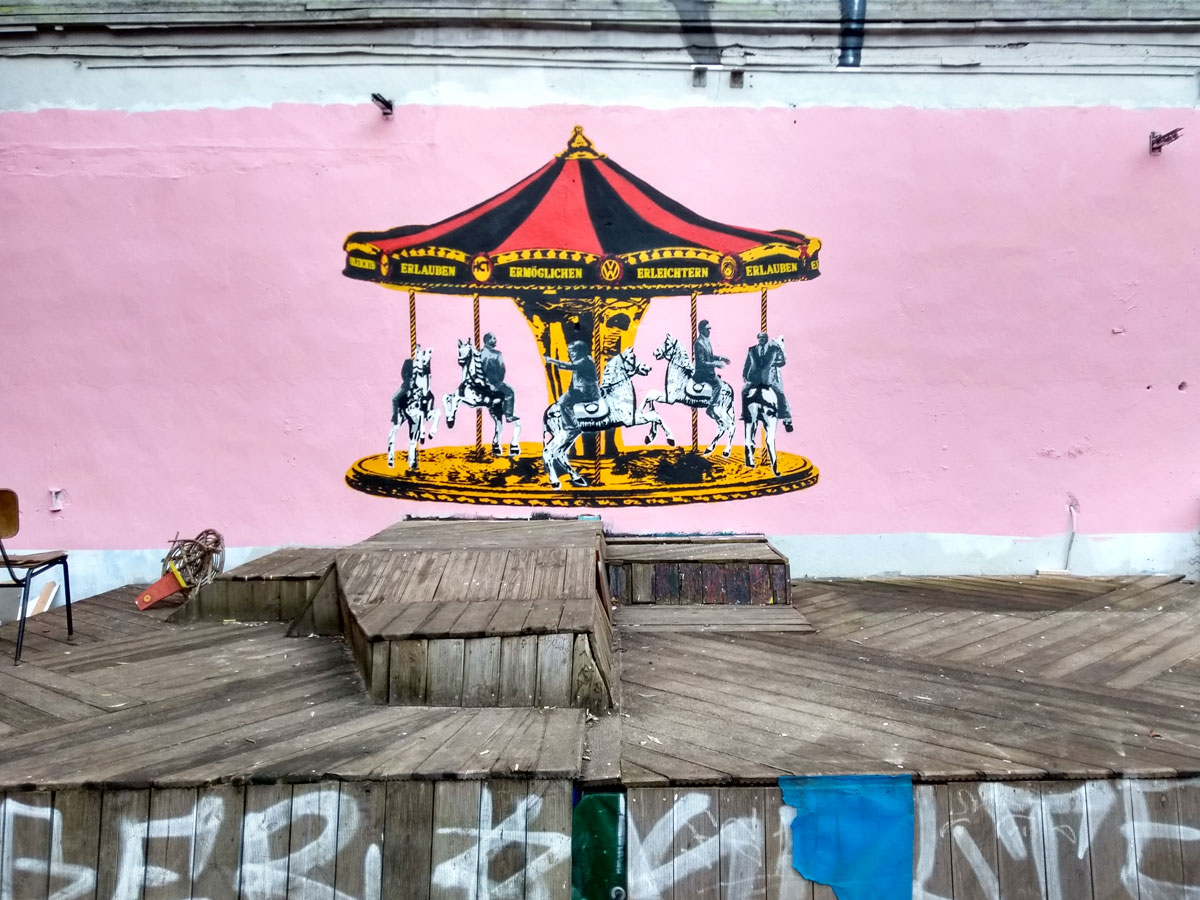
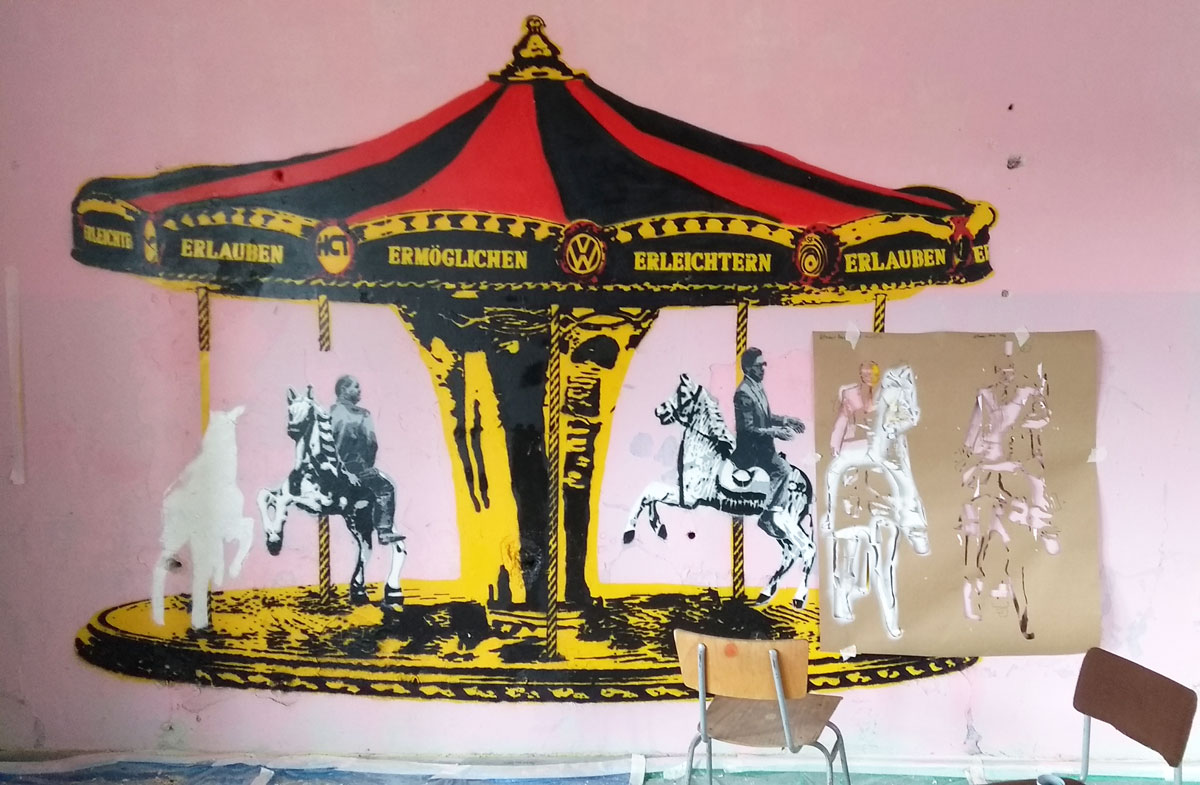
His stencil work graces canvases, murals, and installations alike, poking holes in society’s faulty structures with a style all its own. While this work is socially critical, he believes that jarring realizations rendered beautifully benefit society.
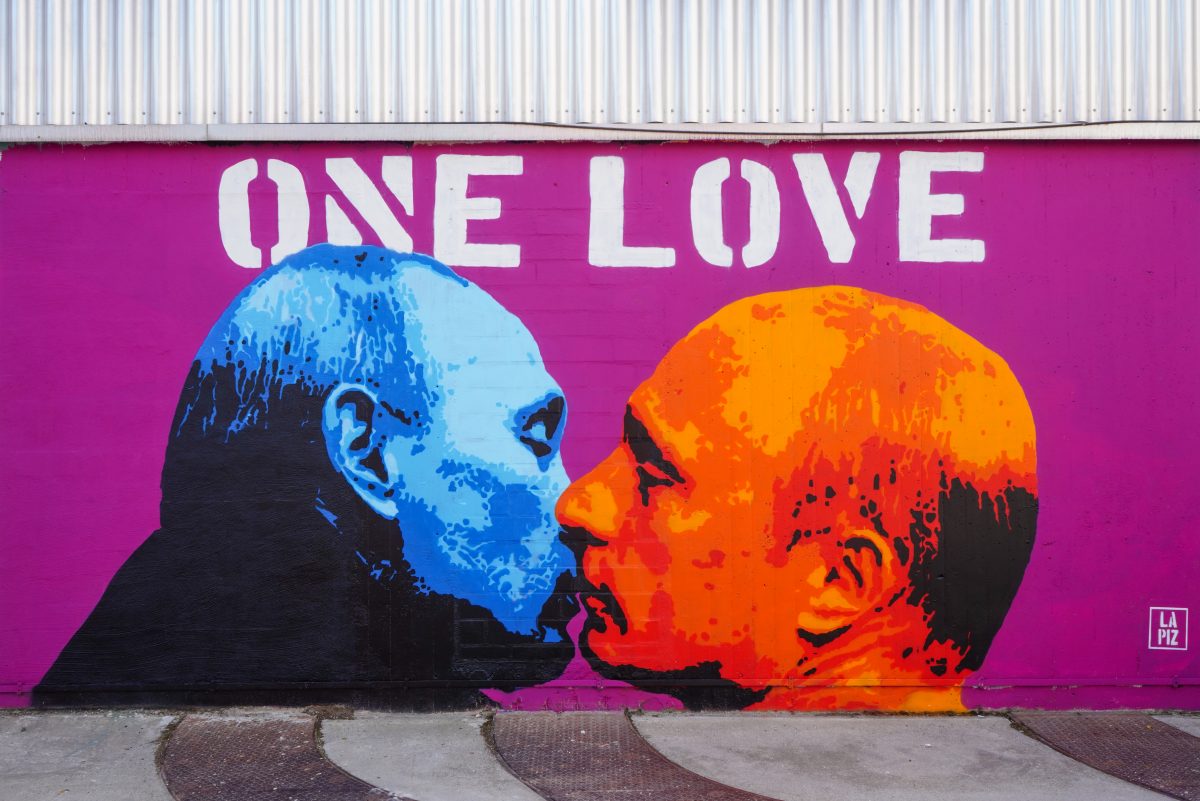
Mural “One Love” by LAPIZ at Munich Werksviertel
Photo by Michael Nguyen
A recently finished new mural by LAPIZ in the Speicherstrasse at Werksviertel in Munich. ONE LOVE was first painted at a festival in Lemwerder in 2018. Over 3 m tall, a bright coloured Vladimir Putin was kissing himself. During that time the FIFA world Cup took place in Russia and the intention was to highlight Putin’s narcissism and homophobia. Four years later, in 2022, this motive of course is very up to date.
“When I pitched the idea to Loomit, (Curator at Werksviertel) he immediately understood that it needed to be seen. And just like that he gave away part of his most prized wall in Munich’s Werksviertel, a piece he painted back in 1999. Over the next couple of days I recreated ONE LOVE, so here is again the homophobic narcissist loving no one else but himself” LAPIZ tells.
Anger, sadness, or disbelief are the natural inputs that precede action, organization, leaps of faith — they are the byproducts of critical thought. A cheerful chap by nature, LAPIZ asserts that he needs to make this art like he needs to breathe. It’s the means by which he exercises his own hope.
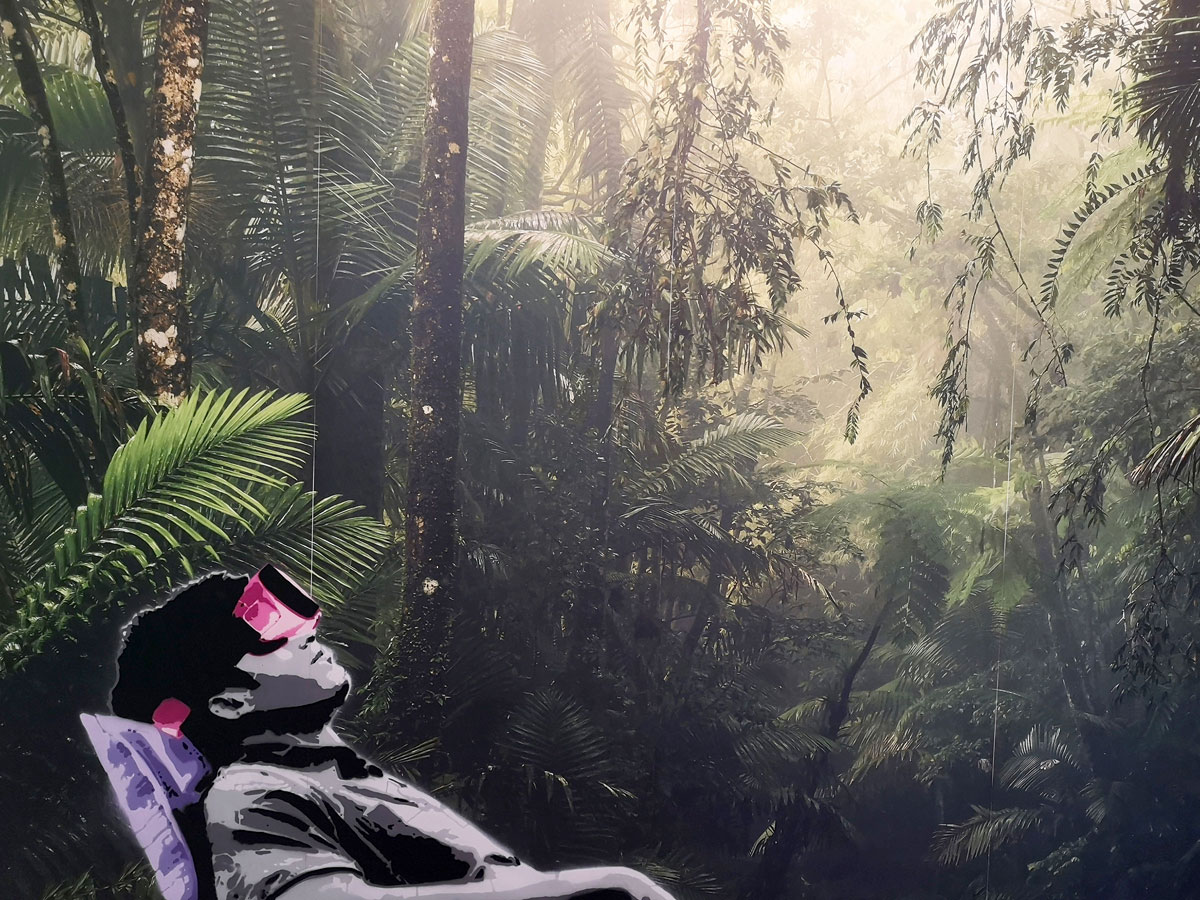
Planet B-1 by LAPIZ
A man is sitting in a comfortable lounge chair escaping into the digital world. Maybe, he watches a documentary about the “green lung” – the untouched part of the Amazon rain forest on Netflix. As he is sitting there enjoying he does not pay any attention to his surroundings. The almond milk in his feel-good tote bag might protect dairy cows but their plantations demand so much water that vast areas are running dry. He doesn’t pay attention to the rose that is cultivated cheap in Africa and flown to Europe for Valentine’s Day (he is a romantic after all), nor the energy used to order his VR glasses or streaming. Instead, of enjoying nature as it is, a parallel, untouched universe is consumed.
This motive was painted in the stairwell of Kunstlabor 2 [ in Munich, using classical stencil technique as well as a photo wallpaper of a beautiful rain forest.
~ Kunstlabor 2 – Munich / Germany ~
Prior to embracing his creative drive, the artist earned his PhD in biology, studying the AIDs crisis in South Africa and working on a new tuberculosis vaccine in New Zealand. While he found the subject matter fascinating, the lifestyle proved deadening. After reaching his breaking point, LAPIZ worked as a translator and tour guide in Argentina. He gradually but decidedly transitioned into his current trade.
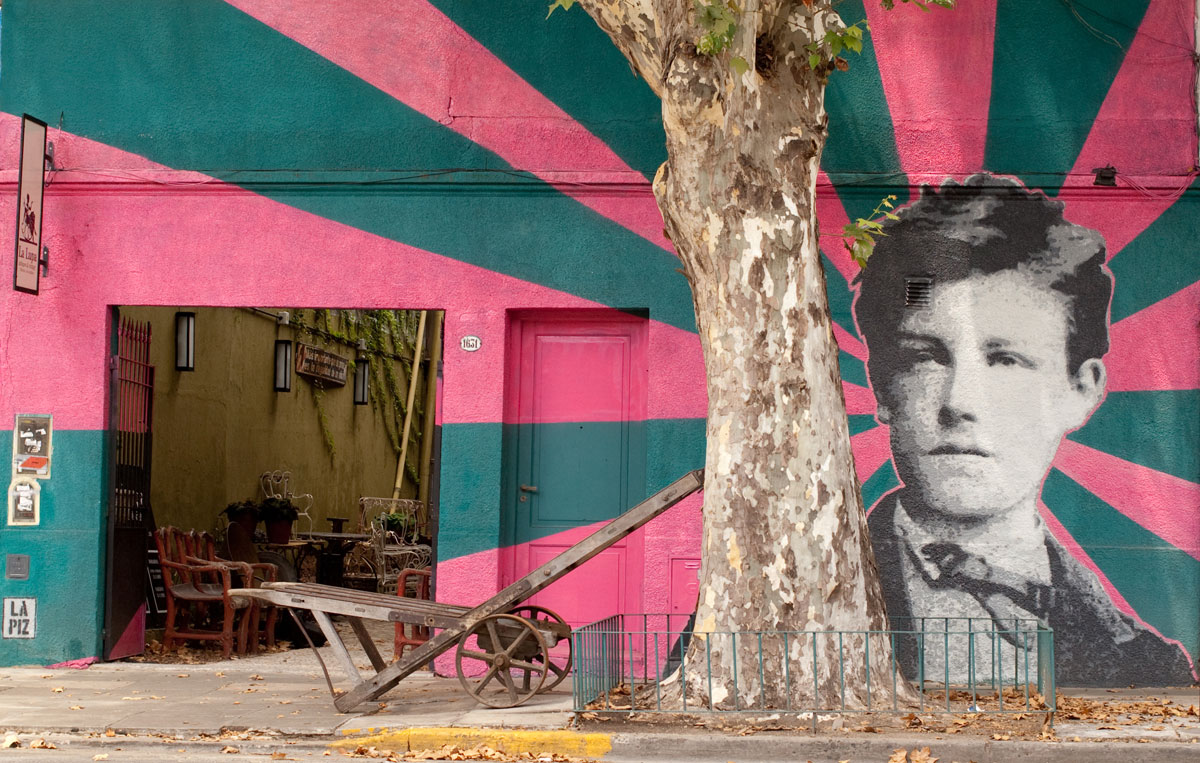
Rimbaud by LAPIZ
A portrait of the French poet Arthur Rimbaud for the antique store La Lupa in Palermo.
Photo credit: Arnaud Paillard
~ Buenos Aires – Argentina ~
LAPIZ cannot function as an artist absent his scientific inclinations — these two facets of his personality are inextricably linked. Like art, science requires structure and skills, dealing with immense stress and delivering results even when nothing seems to work. Science and art both require a high level of organization, self-promotion, and initiative. Even his preferred medium lends itself to left brain activity — stencils are mechanical, well-defined. His work balances these elements with bold colors applied haphazardly, creating a tension which only draws viewers in with more force.

I don’t care by LAPIZ
“I don’t care” is about corruption. Originally sprayed over writings of La Campora (a youth organisation of a political party), which constantly told its citizens how much they love their president. Later painted it in Retiro right on the border between one of the biggest villas of Buenos Aires and one of the richest neighborhood. But really this applies to all places where people take money to look the other way.
LAPIZ has created art for institutions including Grenoble Street Art Festival, MUCA, IBUG Festival, and Kunstlabor. His journey has been covered by outlets like UP Magazine, Brooklyn Street Art, and London Street Art Design Magazine. He is a member of TheaLang Collective, which he formed with longtime friend and painting partner Elmar Karla. While he aims to have his work hanging in a museum someday, LAPIZ prioritizes listening and interpreting— determining what’s truly important. Instead of relying on a ‘winning formula,’ he is resolved to invent himself and perpetually expand his own borders beyond the bounds of his own stencils and everyday life.
Click on an image to open the gallery
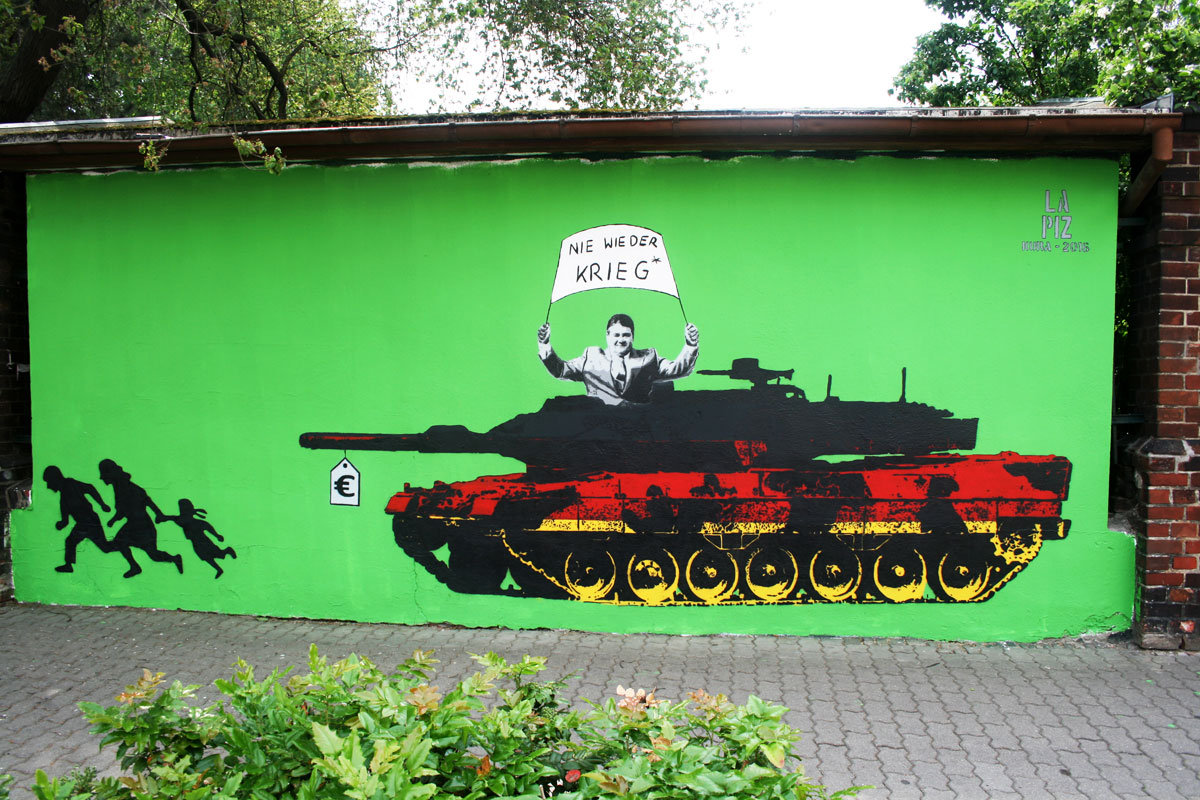
“No more war” shows the German minister for Economic affairs, Sigmar Gabriel, riding a Leopard 2 tank painted in the colours of the German flag (black, red, yellow). The tank is for sale as indicated by the price tag showing a €. Gabriel is holding up a sign that reads ‘Nie wieder Krieg*’ (‘No more war’). Running away from the tank is a family of refugees. The post WWII generation grew up with the firm believe that ‘war is not the answer’ and that there should never be war again. However, this stand has since been diluted down, calling war ‘peacekeeping missions’ and adjusting the motto to ‘No more war, except…’ which the asterisk refers to. The conflicts from which today’s refugees are fleeing have also been made possible by German weapons and Germany’s direct involvement. ~ Kura Urban Art Festival – Wittenberg, Germany ~
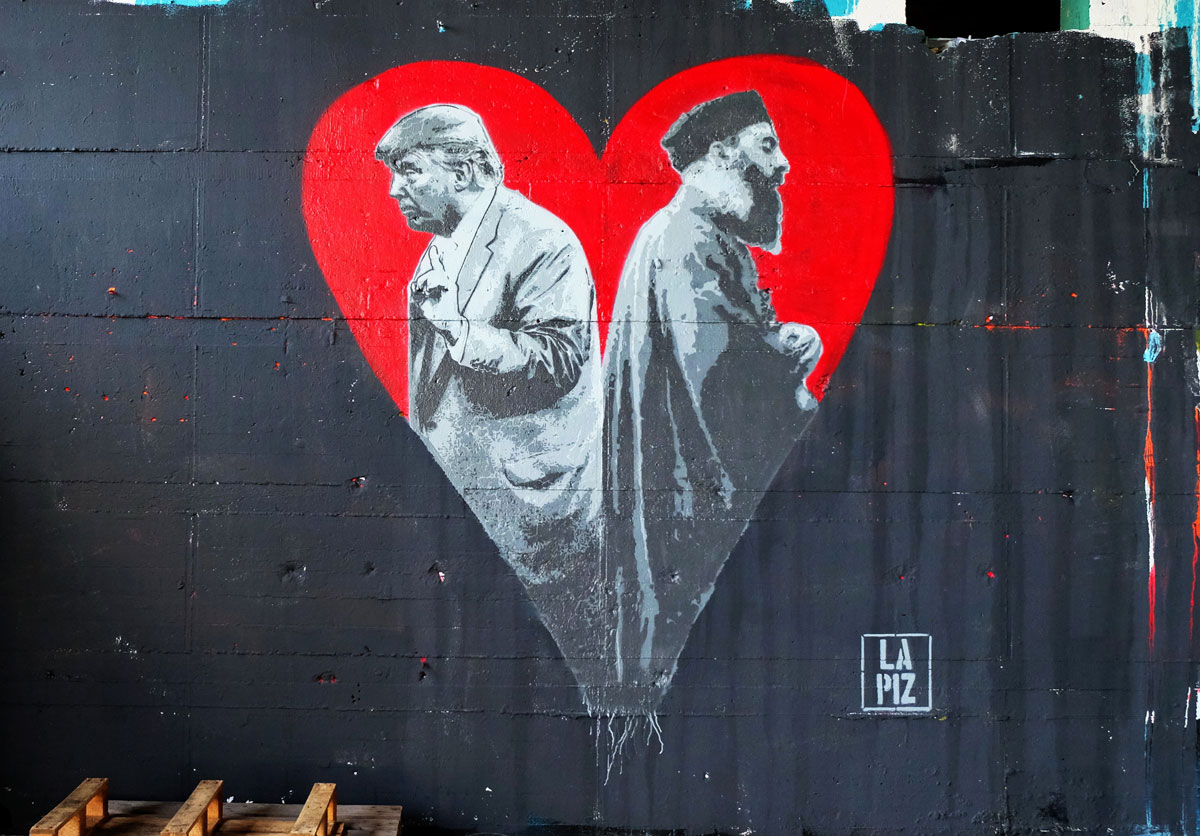
The original version was painted at the old NSA radar station Teufelsberg in Berlin. ‘Soulmates’ shows Donald Trump (President of the United States) on the left and Bakr al-Baghdadi (leader of the Islamic State) on the right. Both have turned their back to one another but are united on a giant dark red heart. The idea was to show the similarities of these seemingly opposing identities and ideologies. They have far more in common than one might think: extreme simplification of reality, which divides the world in ‘black-and-white’, ‘we’ against ‘them’ etc. convinced that they are right/ speaking for the people. authoritarian rebellion against the ruling system (‘the West’ and ‘the establishment’) which in their view does not represent the majority of the people. abolishing democracy and its liberties. reactionary ideas: authoritarian view, anti-liberalism, anti-feminism, patriarchy, traditional gender roles. conspiracy theories which draws them as victims: The own culture is threatened by an invasion of ‘The West’ / ‘Immigrants’. fighting against refugees (displacement of people / ‘Muslim ban’) and I think most frightening of all: They both believe, they are good people. additional photo credit: Callum Winn ~ Teufelsberg Berlin – Germany ~
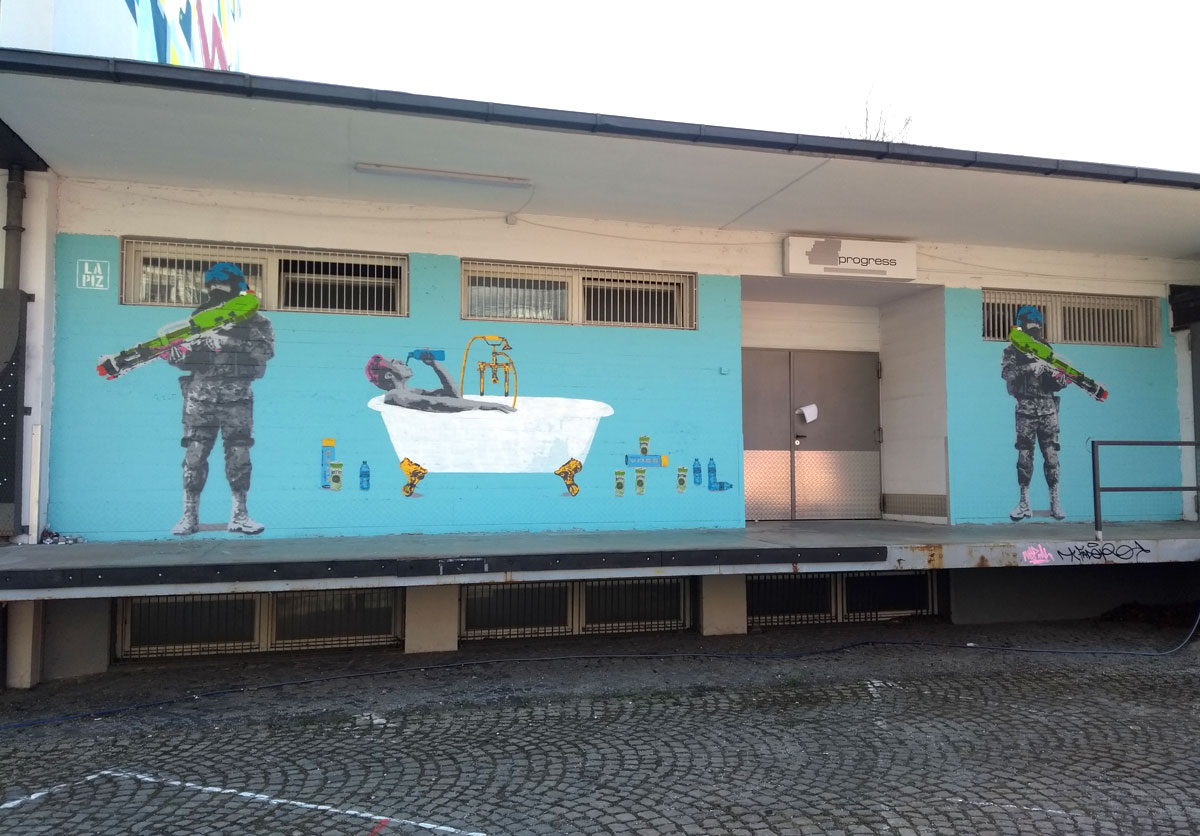
The motive plays with the role of water in our society. Tap water is healthy and so cheap that you can bath in it. However, this is not the case in other parts of the world. As water is essential for humans, it is the perfect tool to distinguish between social success and failure. For example in the Western world, water is cheap and people use in average 35 l / day just to flush the toilet, whereas in the poorest parts of the world, people might only have access to 5-10 l / day and use the majority of their income for its supply. Furthermore, water has become a symbol of status and a luxury item as bottled water is up to 5000 x more expensive than tap water and even more expensive than oil. The difference is that water is something every single person needs. In its absence there is no economy, but more social differences and more conflicts leading to war and increased migration. ~ Z-Common-Ground 2019 – Munich / Germany ~
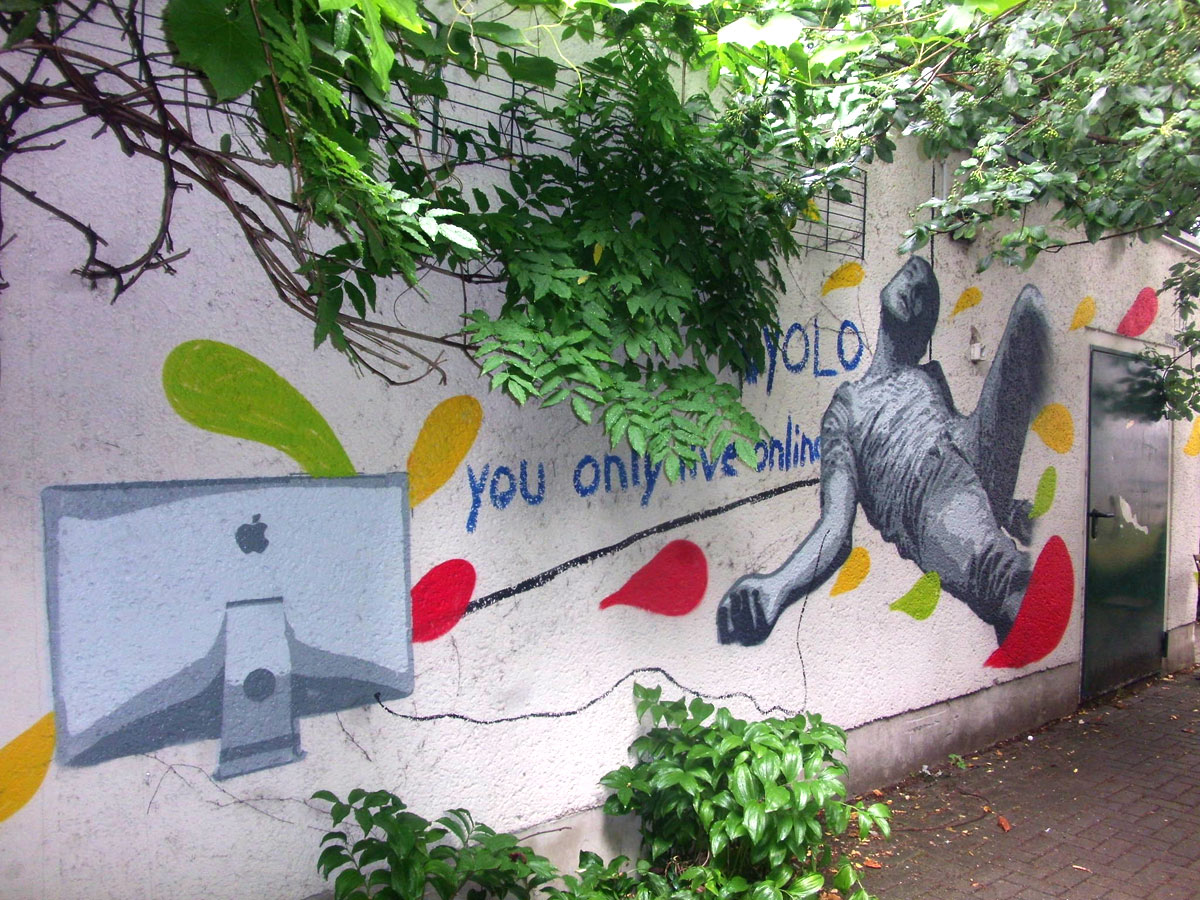
YOLO, you only live online’ addresses the need for online appreciation. You only live if you can proof it online. People doing “crazy” stuff because #yolo! you only live once. Share it and you live, don’t and you are nothing. Everything is happening online, it is the place to be and it needs to be checked and updated constantly. I also made a video of the process. The first time I painted it with a girl holding a tablet, taking pictures: ‘Exit reality’. It plays with our addicition to social media, to our need of online appreciation and the hunt for likes. This early version I painted during an underground party in an abandoned house in Buenos Aires while people did drugs on the toilet and danced to ‘I fink you’re freaky’ from Die Antwoord (just so you have an idea :). ~ Urban Up Festival – Leipzig – Germany ~
The Climate Carousel
I got the idea for the ‘Climate Carousel’ after watching a video by German youtube star Rezo which he posted shortly before the European Elections, dismantling the parties in Germany’s government. Part of it dealt with the governments excuses for not addressing the climate emergency. One of the quotes taken were that the government wants to ‘allow’, ‘facilitate and make possible to do certain things, instead of telling people what to do or prohibit certain things. They very much ignored the need to restrict the industries which are the main CO2 producers in Germany: Lufthansa, Heidelberg Cement, RWE, VW and BASF (whose logos can be seen in the picture). The politicians shown in the motive are the minister for finance Olaf Scholz, the minister for environment Sonja Schulze, Chancellor Angela Merkel, the minister for traffic Andreas Scheuer and the minister for economics Peter Altmair.
~ Gaengeviertel – Hamburg, Neustrelitz – Germany ~
Click on an image to open the gallery


